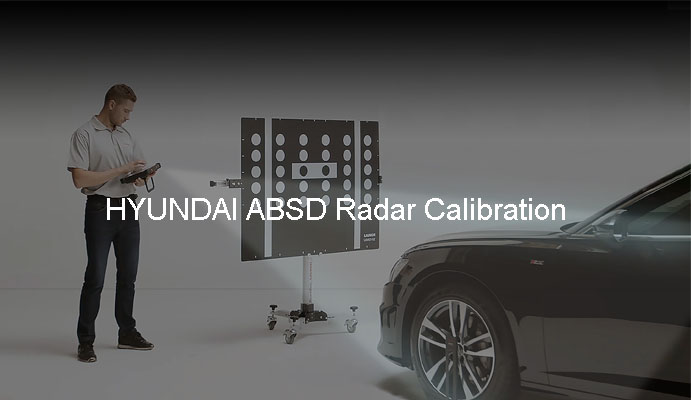Overall, tire tread scanners play an irreplaceable role in improving vehicle safety and optimizing tire management.
Tire tread scanners work based on optical or laser measurement technology, designed to accurately detect the wear and depth of the tire tread. Here is the basic working principle:
1. Optical or laser scanning
① Scanners are usually equipped with high-precision optical sensors or laser transmitters. These sensors emit light or laser beams to the tire surface and capture the reflected signals.
② When light or laser beams hit the tire surface, they produce different reflection patterns depending on the depth of the tread pattern. The scanner measures the depth and wear of the tread by analyzing these reflection patterns.
2. Data Capture and Processing
① The scanner converts the captured optical or laser data into digital signals. These signals represent the different heights and shapes of the tire surface.
② The advanced scanner is equipped with a built-in processor that can process this data in real time to generate a 3D model of the tire surface. The model shows every detail of the tread, helping users identify worn areas or uneven wear patterns.
3. Results display and analysis
① After processing, the scanner displays the results on the screen, usually including a numerical value of tread depth, a graphic representation of the degree of wear, and possible diagnostic suggestions.
② Some scanners can also store or transfer data to an external device, such as a computer or mobile device, for further analysis or long-term record keeping.
4. Warnings and suggestions
When it detects that the tread wear is approaching the safety limit, the scanner can issue an alarm to remind the user to replace or repair the tire in time to ensure driving safety.
Overall, tire tread scanners provide a fast and accurate tire condition assessment tool through precise optical or laser measurement technology, helping to improve vehicle safety and maintenance efficiency.
Tire tread scanners offer several significant benefits that make them an essential tool for vehicle safety maintenance. Here are the main benefits:
1. Accurate measurement
① High-precision detection: Tire tread scanners use optical or laser technology to provide more accurate tread depth readings than traditional manual measurement methods. It can detect the slightest wear and ensure that the tire is used within a safe range.
② Uniformity Analysis: The scanner can accurately identify uneven wear on the tread, helping car owners or technicians to detect problems in time and take appropriate measures.
2. Rapid testing
① Efficient operation: Compared with the traditional manual inspection method, the tread scanner is simpler and faster to operate. It only takes a few seconds to complete the inspection of the entire tire, greatly shortening the inspection time.
② Batch inspection: For auto repair shops or fleet management, scanners can quickly inspect the tire condition of multiple vehicles and improve overall work efficiency.
3. Data Recording and Analysis
① Long-term data storage: Most tread scanners are able to save historical inspection data, which allows users to track tire wear trends and facilitate predictive maintenance.
② Visual reports: Scanners can usually generate charts and reports that visually display the wear of the tire and help users better understand the test results.
4. Improved security
① Timely warning: By regularly using the scanner to check tires, excessively worn tires can be detected in time to prevent traffic accidents caused by tire failure.
② Extend tire life: By accurately analyzing tread wear, users can rationally arrange tire rotation or replacement to extend tire life and thus reduce costs.
5. Easy to operate
① User-friendly interface: Most scanners are designed with a simple and easy-to-use operating interface, which can be easily used even by non-professionals.
② Portability: Many tread scanners are small and easy to carry, making them suitable for car owners to check tire conditions anytime and anywhere.
6. Environmental protection and cost-effectiveness
① Reduce waste: By accurately judging the wear of tires, you can avoid replacing tires prematurely and reduce unnecessary waste and expenses.
② Promote environmental protection: Extending the service life of tires helps reduce the generation of tire waste and supports environmental protection.
These advantages make tire tread scanners play an important role in improving vehicle safety, optimizing tire management and improving work efficiency.
Tire tread scanners can play an important role in many scenarios. Here are some of the main application scenarios:
1. Car repair shop
① Tire inspection: Service technicians use scanners to quickly detect the tire condition of the customer's vehicle, providing accurate wear data and replacement recommendations.
② Maintenance Service: During vehicle maintenance or inspections, scanners help assess tire condition to ensure safety and performance.
2. Self-check by the owner
① Regular inspection: Car owners can use a tread scanner to regularly check the condition of their vehicle's tires to ensure that the tires are in optimal condition.
② Prevent Problems: Detect tire wear issues early to avoid accidents or costly replacements caused by tire problems.
3. Fleet management
① Batch inspection: Fleet managers use scanners to regularly inspect tires across the entire fleet to improve vehicle maintenance efficiency.
② Data recording: Record and analyze the tire condition of each vehicle to optimize maintenance plans and reduce operating costs.
4. Car sales and service center
① Vehicle pre-delivery inspection: Use the scanner to check tires before a new car is delivered to ensure the safety of the vehicle.
② Value-added services: Provide tire inspection services to enhance customer satisfaction and trust.
5. Car rental companies
① Pre-rental inspection: Ensure the rental vehicle's tires are in good condition to reduce maintenance issues during the rental period.
② Post-lease inspection: Check the condition of the tires upon vehicle return to determine if they need to be replaced or repaired.
6. Car racing and performance teams
① Performance Monitoring: High-performance racing teams use scanners to monitor tire wear and optimize race strategy and vehicle performance.
② Safety: Ensure the car's tires are in the best condition during the race, improving safety and competitiveness.
These application scenarios demonstrate the wide range of roles that tire tread scanners can play in improving safety, increasing efficiency, and optimizing maintenance management.
Here are a few factors to consider when choosing the right tire tread scanner:
1. Measurement accuracy
① Resolution: Choose a scanner with high resolution and accuracy to ensure that tread depth can be accurately measured and minute wear detected.
② Error margin: Understand the measurement error margin of the device to ensure it meets your needs and standards.
2. Functions and Features
① Scanning technology: Choose the scanning technology that suits your needs (such as laser, optical, or ultrasonic). Each technology may differ in accuracy and application scenarios.
② Data Logging: Consider whether the device supports data storage, history, and report generation to track tire condition over time.
Wireless connectivity: Some devices support wireless transmission capabilities, which can send data to a computer or mobile device for remote access and analysis.
3. Ease of operation
① User interface: Choose a scanner with a user-friendly interface and simple operation to ensure that all users (including non-professionals) can easily get started.
② Automated functions: Some high-end equipment has automated measurement and data analysis functions, which can improve operational efficiency and accuracy.
4. Compatibility
① Vehicle Type: Make sure the scanner is compatible with the type of tires and vehicle model you need to inspect.
② Device compatibility: Consider the compatibility of the device with existing workflows or software systems to ensure that data can be easily integrated and used.
5. Portability and durability
① Equipment weight and size: Choose equipment that is lightweight and easy to move, especially if you need to perform testing in different locations.
② Durability: Make sure the equipment is made of strong, durable materials that can withstand frequent use and various working environments.
6. Cost-effectiveness
① Budget: Choose cost-effective equipment based on your budget and consider whether the performance and functions of the equipment meet your needs.
② Maintenance costs: Understand the maintenance and calibration costs of your equipment to ensure long-term economical use.
7. Brand and after-sales service
① Brand reputation: Choose products from well-known brands, as their quality and technical support are usually more guaranteed.
② After-sales service: Check the warranty, technical support and training services provided by the manufacturer or supplier to ensure that problems encountered during equipment use can be resolved in a timely manner.
By considering these factors comprehensively, you can choose the tire tread scanner that best suits your needs and improve the accuracy and efficiency of tire inspection.
The future trends of tire tread scanners include the following aspects:
1. Intelligence and Artificial Intelligence (AI)
① Intelligent Analysis: Future scanners will integrate more artificial intelligence technologies to automatically analyze tire wear patterns, predict potential problems, and provide optimization suggestions.
② Adaptive learning: The device can optimize itself and improve detection accuracy and efficiency by learning the user's operating habits and detection data.
2. High precision and multi-function integration
① Higher resolution: Higher resolution scanners will be introduced, providing more precise measurement and analysis capabilities, capable of detecting even smaller changes in wear.
② Multifunctional devices: Future scanners may integrate multiple detection functions, such as tire pressure detection, tire temperature monitoring, etc., to provide a comprehensive tire health assessment.
3. Networking and data integration
Internet of Things (IoT): The device will be integrated with IoT technology to achieve real-time data transmission and remote monitoring. Users can obtain real-time tire condition information through mobile devices or computers.
4. Augmented reality (AR) and virtual reality (VR)
① AR/VR application: During the tire inspection process, AR or VR technology will be used to visualize data to help users understand tire wear and maintenance recommendations more intuitively.
② Training and simulation: Use AR/VR for equipment operation training and maintenance simulation to improve users’ operating skills and maintenance efficiency.
5. Automation and unmanned operation
① Automatic detection system: Future scanners will be equipped with more advanced automation technology to achieve unmanned tire inspection and data collection, improve work efficiency and reduce human errors.
② Robotic application: Combined with robotic technology, automated tire inspection and maintenance operations can be performed to further improve inspection accuracy and efficiency.
6. Environmental protection and sustainability
① Environmentally friendly design: The new scanner will focus on the use of environmentally friendly materials and energy efficiency to reduce the impact on the environment.
② Sustainability: Equipment will pay more attention to long-life design and maintainability, reduce electronic waste, and promote sustainable development.
7. Improved user experience
① Simplified operation: Equipment operation will be further simplified, and the user interface will be more user-friendly, making it easier for users of all skill levels to quickly get started.
② Personalized function: Provide customized test reports and suggestions based on user needs to improve user experience and satisfaction.
These trends will drive tire tread scanners to develop in the direction of higher accuracy, greater intelligence and greater convenience, further improving vehicle safety and maintenance efficiency.
Return


